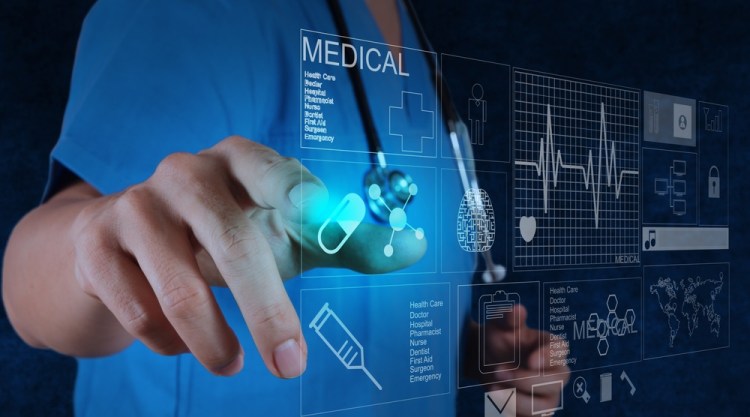Your doctor may not want your Fitbit numbers, or so read a recent VentureBeat story. Perhaps many of us doctors are working so hard to figure out how to get reimbursed by Obamacare that we don’t have the time to think about disruptive technologies.
That’s a pity, as the Affordable Care Act – while transformative – is not the only structural force taking hold in healthcare. The other major trend is the move to a precision medicine model, one that will welcome Fitbits and whatever other wearable technologies hit the market in the future.
Precision medicine is a complete shift in thinking. Instead of treating whole populations of people as they get sick, all with the same standardized approach, precision medicine is about proactively monitoring the biomarkers and family histories of an individual to help spot trouble years – even decades – before it expresses itself as disease.
In my practice, we do this today. As an endocrinologist and precision medicine physician, I look at Fitbit data, captured alongside myriad other biomarkers: data on blood work, body fat composition, hormone levels and metabolic rate, among others. I often find patients, so-called self-quantifiers, who are logging these things themselves, not unlike the way some people have long kept track of their banking and investment data via spreadsheets. As technology improved, products like Mint.com automated this in finance. I expect it will be the same in healthcare.
As these devices get smarter – I know of one startup founder who is commercializing a wearable that captures data on metabolism – it will become an increasingly important part of the precision medicine arsenal. The wonderful aspect of wearables and other devices that could be developed on our phones, in our refrigerators, or in our scales, is that they continuously collect, and pass along data, unobtrusively in the background (with little or no effort to upload) and would make it easy to monitor trends over time.
Before long, I expect there to be streams of data capturing your biomarkers flowing into physicians’ computers from wearable devices and other sensors. I wish it were today. It would cut down on a lot of standard office visits and tests and, likely, save time.
Patients will share the data on sleep quality, exercise and alcohol consumption because the numbers will let their doctors alert them to the long arc trends in their health, as well as signs of impending illness long before symptoms manifest.
It could be that a spike in blood sugar, for instance, means something critical to a diabetic, and a physician could react to that. But – while important – this is still the old way of thinking about healthcare. What is more important in precision medicine is that you monitor these values over time, while you are choosing whether to sleep in or exercise, have that dessert or skip it. Over the years and decades, you can see the winding down of your various systems. This allows us to address issues sooner, often reversing problems long before symptoms set in.
As the White House’s new Precision Medicine Initiative explains, it “takes into account individual differences in people’s genes, environments, and lifestyles.” Until now, clinicians have had only a one-size-fits-all way to treat most serious illnesses. Today, when two patients receive diagnoses of, say, lung cancer, specialists can analyze their genes and biochemistry to devise a custom intervention for each patient.
Personal health monitoring draws flak because users tend to be wealthy visible early adopters like billionaire investor Mark Cuban, celebrity Angelina Jolie and physicist and Internet pioneer Larry Smarr, all who monitor their biometrics.
The Affordable Care Act means chaos now, but it is also leading this change by tying reimbursement to value and quality of care, not to numbers of visits as in the old fee-for-service model. Doctors will need numbers; they are grasping for the right analytics, and our personal health metrics can help. Wearables, with their intimate physical access to our bodies, are an obvious data delivery vehicle.
There are barriers. Physicians are not yet trained to use and interpret large data streams. Other devils like FDA mulishness, physician liability, information security, and bureaucratic inertia are more mundane. But these hurdles will fall as universities, scientists, technicians, companies, and investors attack them from all directions.
Precision medicine isn’t waiting. Scientists can make models of patients’ immune systems in mice and create custom treatments for autoimmune diseases like type 1 diabetes. In Boston, all cancer patients at Dana-Farber/Brigham and Women’s Cancer Center can opt to have their tumors screened for DNA abnormalities, allowing them access to more-effective treatments. Already, precision medicine is on the frontlines, helping many patients with chronic or complex conditions lead normal lives.
If you want to glimpse your future, click the Health app on an iPhone or Apple Watch. The app pulls in scores of health metrics from dozens of other apps, metrics as granular as blood pressure, “number of times fallen,” blood alcohol content and electro-dermal activity, all a rich trove for your family doctor someday soon.
We are not there yet, but the moment is coming, and sooner than you think.
Florence Comite, M.D., an endocrinologist, is the author of Keep it Up, a book about precision medicine, and runs a precision medicine practice in Manhattan.


